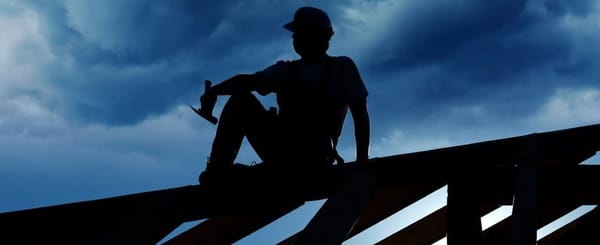Roofing company found to have placed its financial interests ahead of the safety of its workers
An NSW roofing company has been fined $300,000 after pleading guilty to failing to comply with its duties under section 19(1) of the Work Health and Safety Act 2011 (NSW) (SafeWork NSW v Newcastle Roofing Professionals Pty Ltd [2025]).
Newcastle Roofing Professionals Pty Ltd (the company) was engaged to undertake roof replacement works at a split-level residential premises in Valentine, New South Wales. The works involved removing existing tiles from sections of the roof and replacing them with Colorbond steel roofing.
On 8 November 2021, the company’s workers accessed the roof of the property wearing harnesses and lanyards, which they attached to an anchor point system as they commenced removing tarpaulin from the tiles. Sometime afterwards, a roofing plumber, who had been inside the premises, proceeded to access the roof and traversed towards the anchor point to attach his lanyard. As the tiling was wet from recent rainfall, the plumber slipped before reaching the anchor point. He slid to the edge of the roof before falling approximately 4.2 metres to the ground, sustaining serious injuries. Evidently, the anchor point system the company used was not adequate to protect against the risk of falling from the roof, including when accessing it.
In its decision, the Court highlighted that there were many steps available to eliminate or minimise the fall risk. It was also clear that the company was aware of these steps but chose not to comply. The company had initially required safety rails to be installed around the periphery of the roof, but when this was not achievable, it obtained a quote for scaffolding. The company asked the client to pay the additional cost of the scaffolding. When the client refused, the company proceeded by using the lesser protection afforded by a harness and anchor point system – in effect, placing its financial interests ahead of the safety of its workers. Following the incident, the company engaged a scaffolding company to erect a scaffold system to provide edge protection to areas of the house where there was a fall risk, including the area where the roof plumber fell.
The Court also made note of resources available to the company that should have guided its conduct. This included the Work Health and Safety Regulations 2017 (NSW) and various SafeWork NSW codes of practice. In particular, it was noted that the SafeWork NSW code of practice, Managing the risk of falls, provides that anchorage points for fall arrest systems, like the one the company used, must be positioned so that a lanyard can be attached to it before the person using the system moves into a position where they could fall.
Following the incident, the company undertook a review of its systems relating to high-risk works at height and implemented more effective control measures to prevent this type of incident from occurring in the future. However, since April 2022, the company has ceased its installation operations, instead focusing on supply and marketing.
Falls from height are a major cause of injury and death in Australia. It was in fact the second-highest contributor to worker fatalities in Australia in 2023. You have a duty under health and safety legislation to manage the risks of falls, whether your business operates in a high-risk workplace or not. Review the recently updated Health & Safety Handbook chapter, Working at heights, for in-depth guidance on meeting your obligations and keeping your workers safe.
From the experts behind the Health & Safety Handbook, the Bulletin brings you the latest work health and safety news, legal updates, case law and practical advice straight to your inbox every week.

